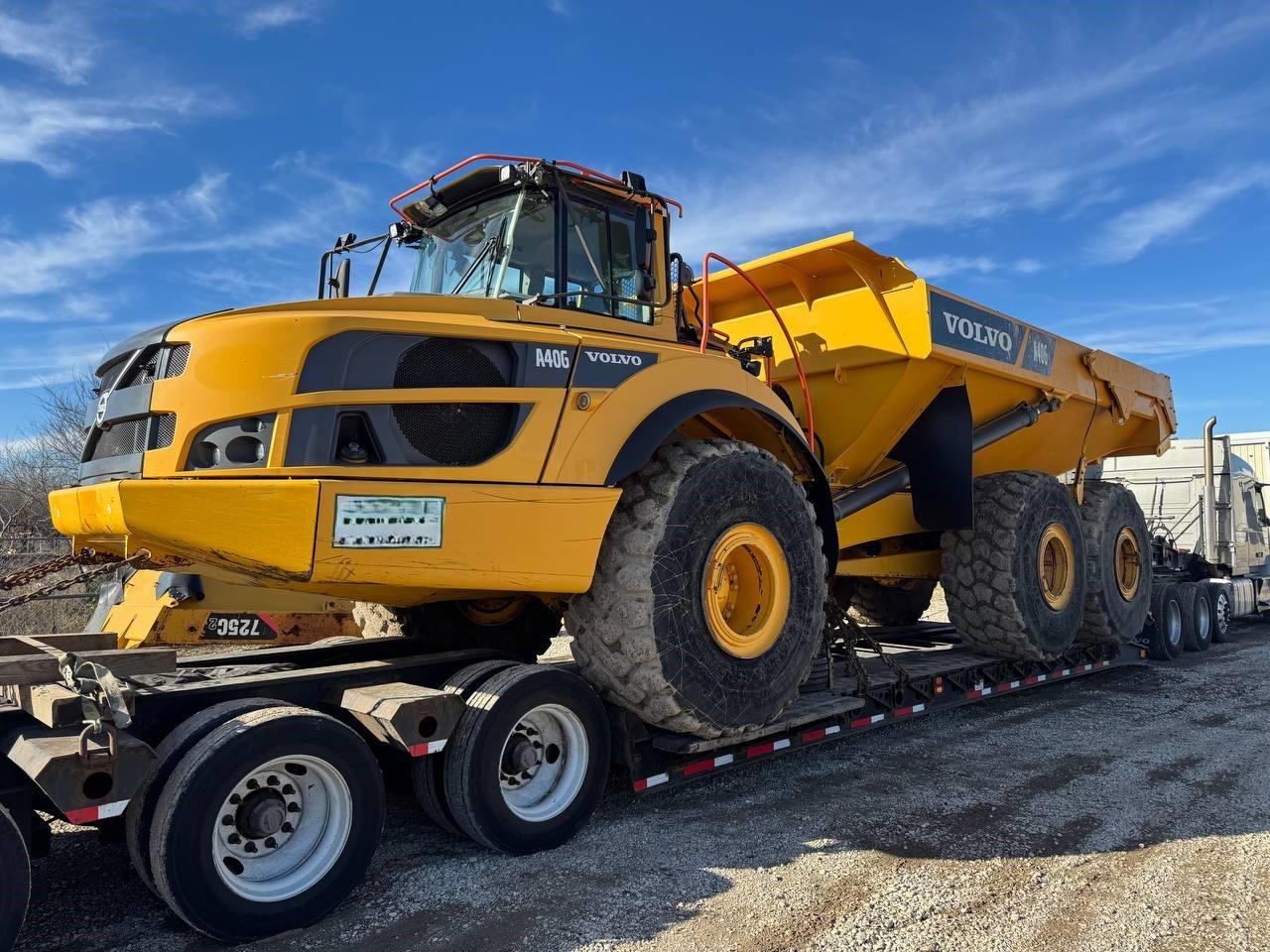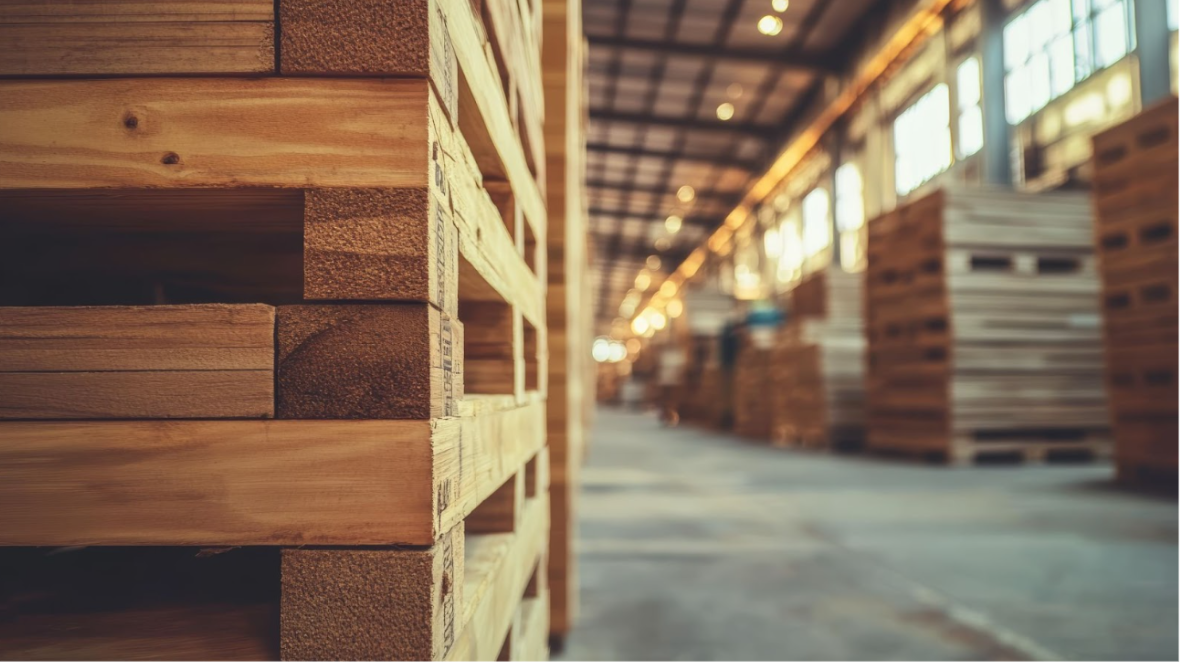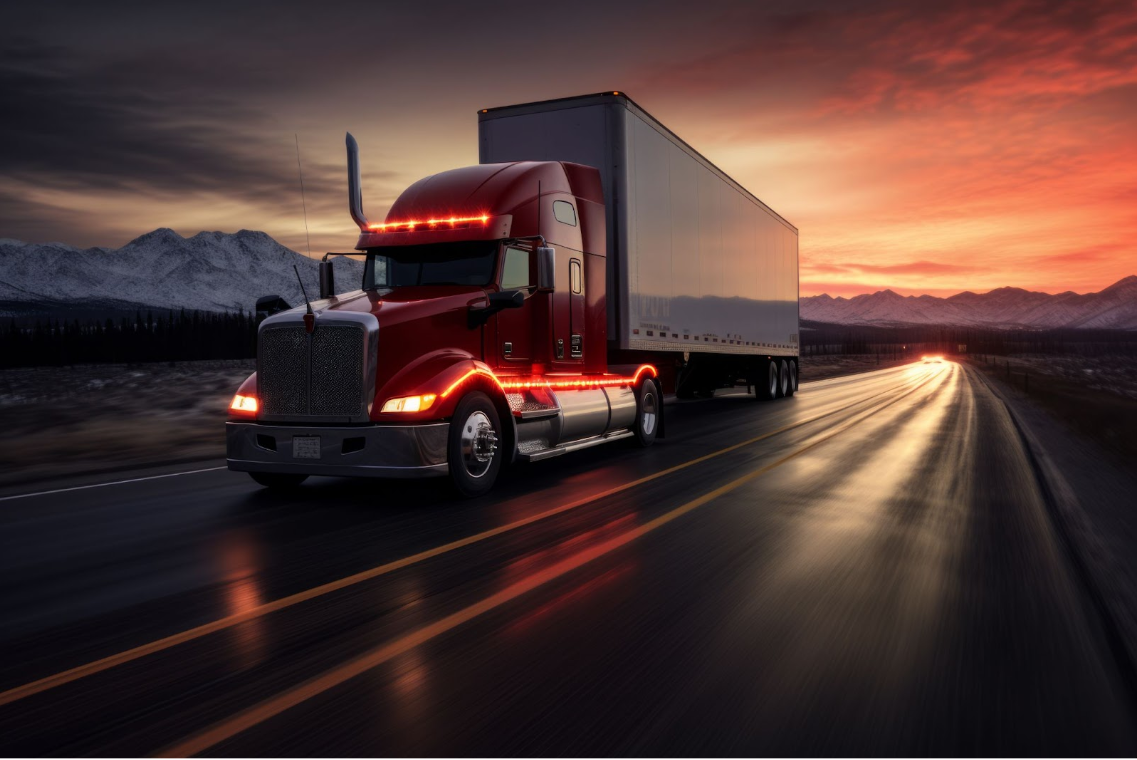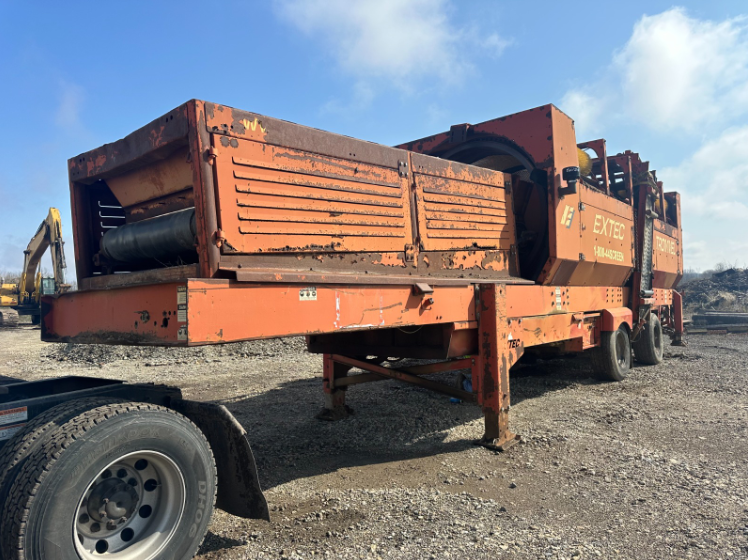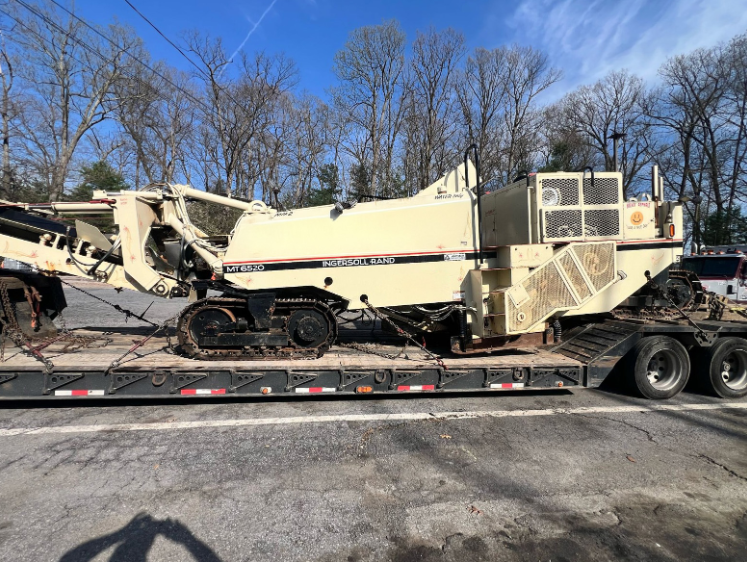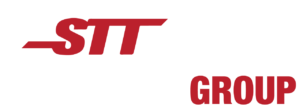
Heavy equipment transportation isn’t your average shipping job. Here at STT, we embrace every opportunity we encounter to transport over-dimensional loads. This branch of logistics is a highly specialised field where precision planning, route compliance, and safety come together to move hefty machines that sometimes weigh more than small buildings.
When you need to relocate a single excavator or haul a fleet of articulated dump trucks across the U.S. border into Canada, it won’t be a plug-and-play delivery. Every detail matters—from axle pressure and permit zones to the gradient of a mountain road. And unlike standard freight, there’s never going to be a one-size-fits-all solution.
At STT Logistics Group, we’ve been managing these complexities with a can-do attitude since 2015. For our teams, transporting oversized freight is clearly about moving equipment—but it’s about delivering peace of mind to our valued customers.
In this blog post, we’ll break down what makes heavy equipment transportation such a delicate matter—from the challenges of size and weight to the trailers, permits, and planning tools that keep everything running smoothly.
What Qualifies as Heavy Equipment?
Let’s get down to the basics. Before we talk trailers, permits, or logistics tech, let’s clarify what we mean by heavy equipment. In short: if it’s big, bulky, and built to do heavy lifting—it qualifies.
This includes:
- Construction machines (e.g. excavators, bulldozers, wheel loaders, and graders)
- Lifting equipment like cranes and forklifts
- Agricultural vehicles such as tractors and harvesters
- Processing equipment such as impact crushers, tub grinders, and screening plants
- Industrial rigs and generators
- Mining and drilling equipment
These machines certainly weigh a lot—a standard excavator can weigh 45,000 lbs, while large wheel loaders or cranes can easily top 120,000 lbs—and they’re also wide, tall, or unusually shaped, often qualifying as wide loads, oversized loads, or over-dimensional loads under U.S. and international transport laws.
Because of their size and operational use, careful planning is required to load, secure, route, and deliver heavy equipment without any sticky moments. From construction logistics to international exports, every job starts with understanding the nature of the machine—and what it will take to move it safely and efficiently.
So, if it’s got wheels, treads, counterweights—or looks like it belongs in a quarry, a scrapyard, or a sci-fi movie—we’ll figure out how to move it. From cryogenic trailers to mobile scalping screeners, trenchers to 160,000 lb cranes, we’ve seen (and shipped) it all.
How is Heavy Equipment Moved? — Trailer Types and Methods
When you need to haul a 130,000 lb crane to haul several thousand miles, you can’t use just any trailer—and that’s where equipment matching becomes crucial. Choosing the right trailer for your load can be the difference between a smooth move and a stranded shipment. The most common trailer types in heavy machinery transportation include:
- Flatbeds – Great for smaller machinery under legal size and weight limits.
- Step decks – Provide lower clearance for taller items, allowing better height flexibility.
- Lowboys – The go-to for hauling extremely tall or heavy equipment like bulldozers, cranes, or wheel loaders.
- RGNs (Removable Gooseneck Trailers) – These allow the equipment to be driven directly onto the trailer—ideal for non-running machinery or oversized freight with awkward loading angles.
Each trailer type comes with its own benefits and restrictions. For example, a lowboy can carry up to 12 feet in height, while an RGN gives you both load accessibility and high weight capacity.
Here’s a quick comparison:
| Trailer type | Best for | Height limit | Load access |
| Flatbed | Small machines | Around 8.5 ft | Forklift/crane |
| Step deck | Medium-size loads | Around 10 ft | Forklift/crane |
| Lowboy | Heavy/tall loads | Around 12 ft | Crane only |
| RGN | Oversized/non-running | Around 12 ft | Drive-on |
At STT, we work with expert carriers who know how to operate that equipment safely and efficiently. That’s how we keep your machinery moving, no matter how massive it is.
Dismantling and Reassembly
In machinery logistics, some jobs require a team of dismantling experts to break down machinery before it can be safely loaded. In these cases, logistics planners may need to fly the same specialists to the delivery site so they can reassemble the load at its final destination, too.
This added layer of coordination helps ensure every part arrives intact, properly accounted for, and reassembled by the same hands that took it apart. It’s not always necessary—but when it is, it’s non-negotiable.
Cargo Securement
When you’re moving heavy equipment, it goes without saying that it needs to be secured. And we’re not just talking about chains and straps. We’re talking about compliance with strict regulations designed to prevent accidents, injuries, and cargo loss.
The U.S. Federal Motor Carrier Safety Administration (FMCSA) has detailed Cargo Securement Rules that must be followed for all freight—and especially for heavy equipment hauling. These include standards for tie-down strength, number of anchor points, spacing, and how equipment must be immobilized during transit.
At STT, we treat cargo securement as non-negotiable. That means:
- Using industry-approved chains, binders, and tensioners
- Checking every anchor point before the truck rolls out
- Coordinating with carriers who are trained in securing over-dimensional loads
- Ensuring compliance with every state and federal standard
The cost of getting this wrong? Damaged equipment, delayed delivery, fines—or worse.
We go the extra mile to make sure your freight doesn’t move an inch in transit. Because heavy loads demand heavy responsibility. And we’re up for it—every time.
Driver
Not all drivers are created equal—and when you’re transporting heavy or over-dimensional equipment, matching the job to the right person behind the wheel is one of the most critical (and often overlooked) steps in the process.
Experience Matters
Drivers tasked with moving construction equipment, impact crushers, or dismantled cranes need a deep and thorough understanding of the terrain, the equipment, and the risks involved in the load they’re hauling.
Many carriers keep detailed records of their work. For particularly specialised moves, it’s common for brokers or logistics coordinators to request documentation or visual proof—photos, prior permits, and trailer configurations—to confirm the driver has successfully handled similar freight before.
As STT Logistics Group CEO André Corbert explains, “If we’re moving very specialised pieces of equipment, we’ll look for drivers who can prove it. They’re often proud of their work and send over full files with photos, which helps us verify their experience.”
Core Challenges of Heavy Equipment Transport
When it comes to moving heavy equipment, the colossal sizes involved are really just the beginning. The real challenge lies in aligning dozens of moving parts—both literally and figuratively—to get a single machine from point A to point B without any delays, damage, or compliance issues throwing a spanner in the works.
Let’s look at some of the factors that firms like STT Logistics need to consider.
1. Oversized = Overcomplicated
Most machines we move qualify as oversized loads or over-dimensional loads. That means they exceed standard legal limits for height, width, or weight—and that triggers a long list of requirements:
- Special permits across multiple jurisdictions
- Oversized load escorts or pilot vehicles in certain regions
- Restricted travel times (often daylight only)
- Alternate routing to avoid bridges, tunnels, or low-clearance roads
Every extra inch of height or pound of weight means additional planning.
2. Terrain
Unfortunately, not every job happens on a newly asphalted highway. One day it’s Texas interstate, the next it’s a mountain road in Guatemala. Our teams have to account for:
- Tight switchbacks
- Soft or unpaved access roads
- Bridge load ratings and slope percentages
- Roadside conditions in both wet and dry climates
When the terrain changes, so does the strategy.
3. Weather
If only we could predict it accurately, but we can’t. Rain, wind, snow, extreme heat—each one has the power to delay or complicate a heavy machinery haul. For wide loads or open-air hauling of oversized freight, exposed machinery needs extra care and time buffers to account for this uncertainty.
4. International Regulations
When it comes to transporting heavy equipment, cross-border hauls will always require lots of paperwork. Each country or state has its own:
- Documentation standards
- Customs clearance processes
- Permissible driving hours
- Weight and axle load limits
That means acquiring various permits from different authoritative bodies, often in multiple languages and taking time zones into account.
Preparing for the Unexpected
Even when you think you’ve ticked every box and you’re good to go, sometimes heavy equipment doesn’t play nice. Because not every challenge in heavy equipment transportation is about dimensions, permits, or terrain—unexpected issues can also crop up, especially when your equipment has been purchased from an auction.
Take a recent job coordinated by STT broker Josh Sanchez.

The task: Move a John Deere 844K wheel loader—weighing just over 70,000 lbs—from Kissimmee, FL to Las Vegas, NV.
The twist: When the driver arrived at the auction yard, the machine was completely non-operational.
For most carriers, that would’ve been a costly delay. But at STT, we don’t panic—we adapt. Josh’s driver stayed on-site for two full days, working with on-location mechanics until the machine was up and running again.
“Auction equipment is unpredictable,” Josh said. “But that’s not a problem for us.”
The outcome: There were no extra charges passed to the client, and the job was completed with a smooth five-day delivery to Nevada. That one haul turned into a long-term working relationship—and even an in-person client meeting months later.
These kinds of jobs remind us that the real intricacies of machinery transportation lie in the realities of each individual haul. Machines break. Conditions shift. And when they do, STT shows up with experience, flexibility, and a can-do attitude.
Real-World Scenario – Forklifts from Ohio to Texas
At STT Logistics Group, we execute heavy hauls with precision. One recent example? A 1,680-mile transport from Ohio to Texas, coordinated by our broker Diego Ascencio.
The shipment involved two industrial forklifts, each weighing a massive 72,000 lbs. That’s a combined 144,000 lbs of heavy machinery that had to be moved across state lines, on a tight timeline, with zero room for error.
Here’s what it took:
- Specialized trailers: We used two RGN (Removable Gooseneck) trailers to handle the height and weight of each forklift. These trailers allow for easy loading and unloading—crucial when your cargo is this bulky.
- Cranes at both ends: Due to the size and non-operational status of the forklifts, cranes were required for both pickup and drop-off. We coordinated all lifting equipment and crews to be ready at both sites.
- Permits and planning: With oversized dimensions, this haul required multi-state permits and route planning to avoid weight-restricted roads and low-clearance bridges.
- Team coordination: From Diego’s brokerage work to dispatch and driver communication, the operation was seamless—just the way we like it.
This job is a perfect example of what heavy equipment hauling really means: attention to detail, experience with the unexpected, and the ability to align moving parts across hundreds of miles.
At STT, we treat every load—no matter how large—as a priority.
Final Thoughts
Heavy equipment transportation is all about the details. The right equipment, the right permits, the right driver, the right route, the right plan—and the adaptability to change the plan when things change. From forklifts to cranes and everything in between, STT Logistics Group handles the tough jobs with precision, professionalism, and care.
Whether you’re hauling across states or borders, we make it simple. You’ll get a single point of contact, real-time updates, and a team that’s always a step ahead.
You call. We haul. That’s all.
Ready to move something big? Contact STT Logistics Group and let’s get rolling.
